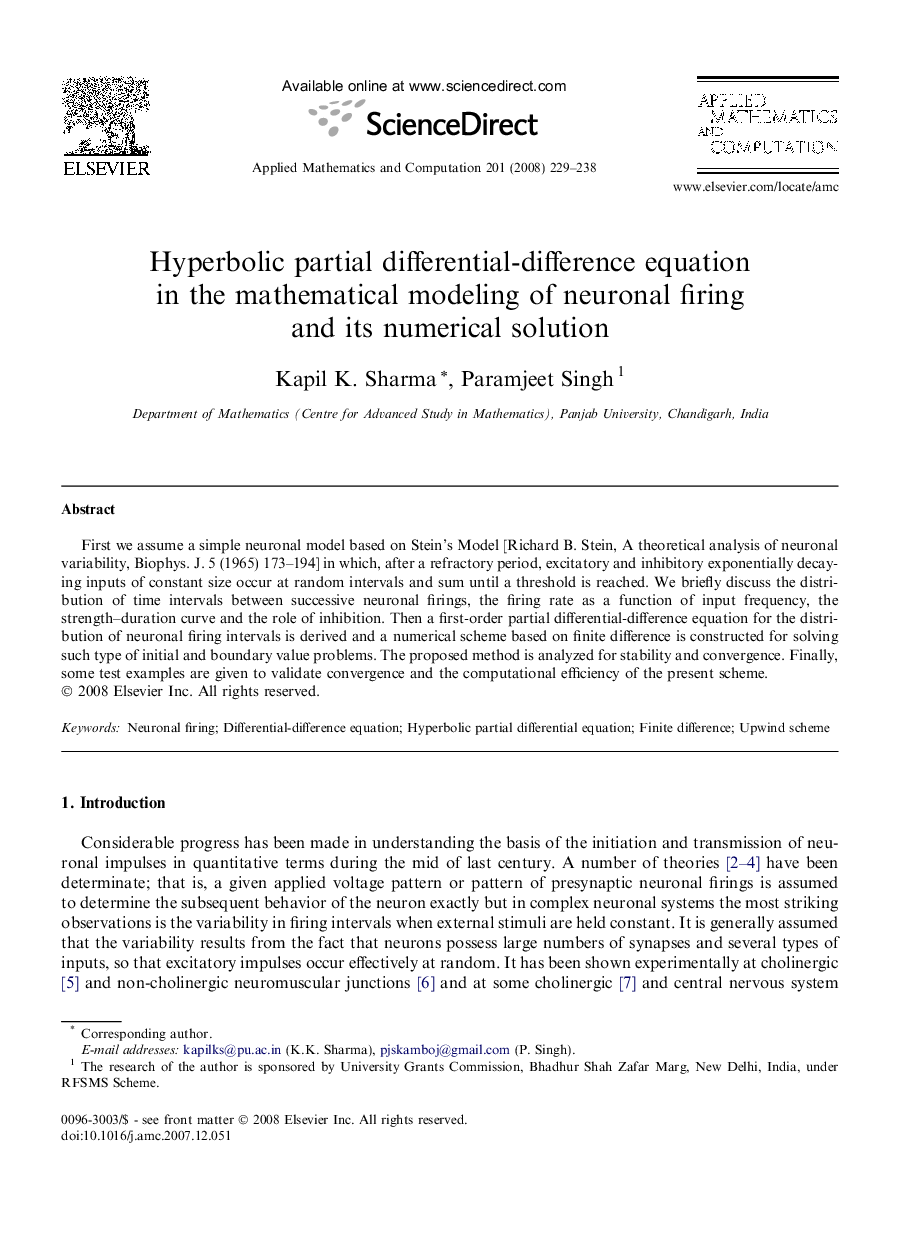| Article ID | Journal | Published Year | Pages | File Type |
|---|---|---|---|---|
| 4634326 | Applied Mathematics and Computation | 2008 | 10 Pages |
Abstract
First we assume a simple neuronal model based on Stein's Model [Richard B. Stein, A theoretical analysis of neuronal variability, Biophys. J. 5 (1965) 173-194] in which, after a refractory period, excitatory and inhibitory exponentially decaying inputs of constant size occur at random intervals and sum until a threshold is reached. We briefly discuss the distribution of time intervals between successive neuronal firings, the firing rate as a function of input frequency, the strength-duration curve and the role of inhibition. Then a first-order partial differential-difference equation for the distribution of neuronal firing intervals is derived and a numerical scheme based on finite difference is constructed for solving such type of initial and boundary value problems. The proposed method is analyzed for stability and convergence. Finally, some test examples are given to validate convergence and the computational efficiency of the present scheme.
Keywords
Related Topics
Physical Sciences and Engineering
Mathematics
Applied Mathematics
Authors
Kapil K. Sharma, Paramjeet Singh,
